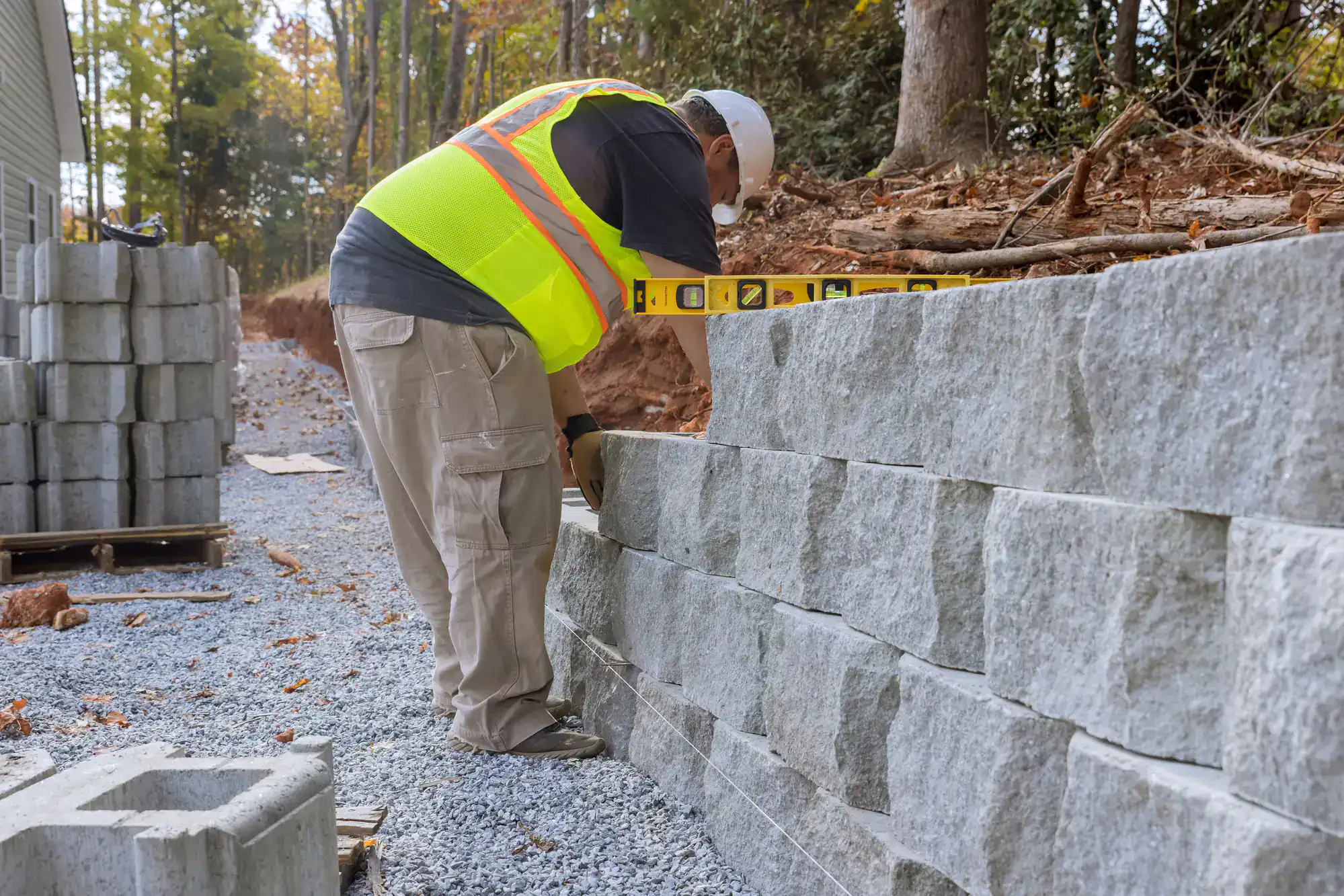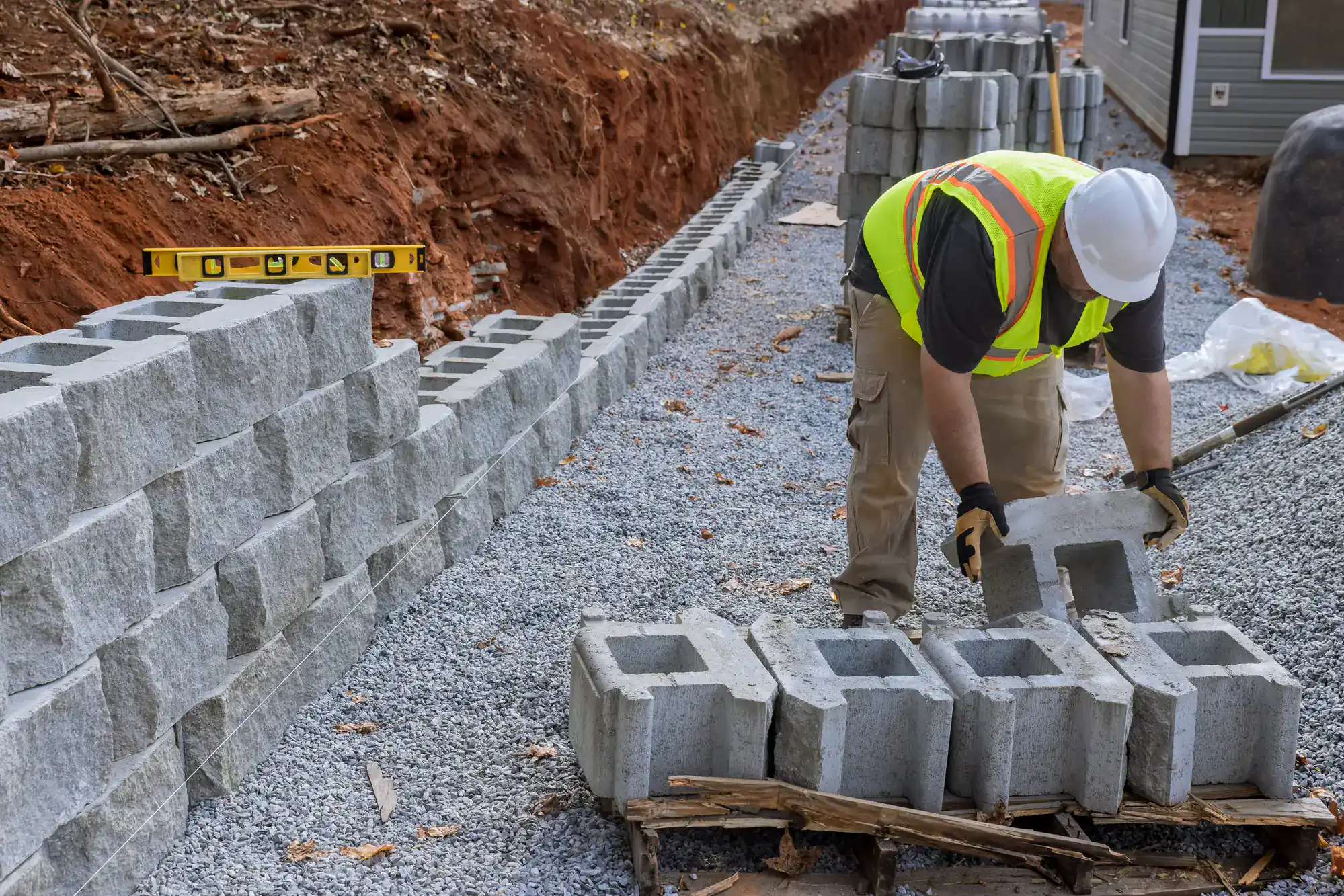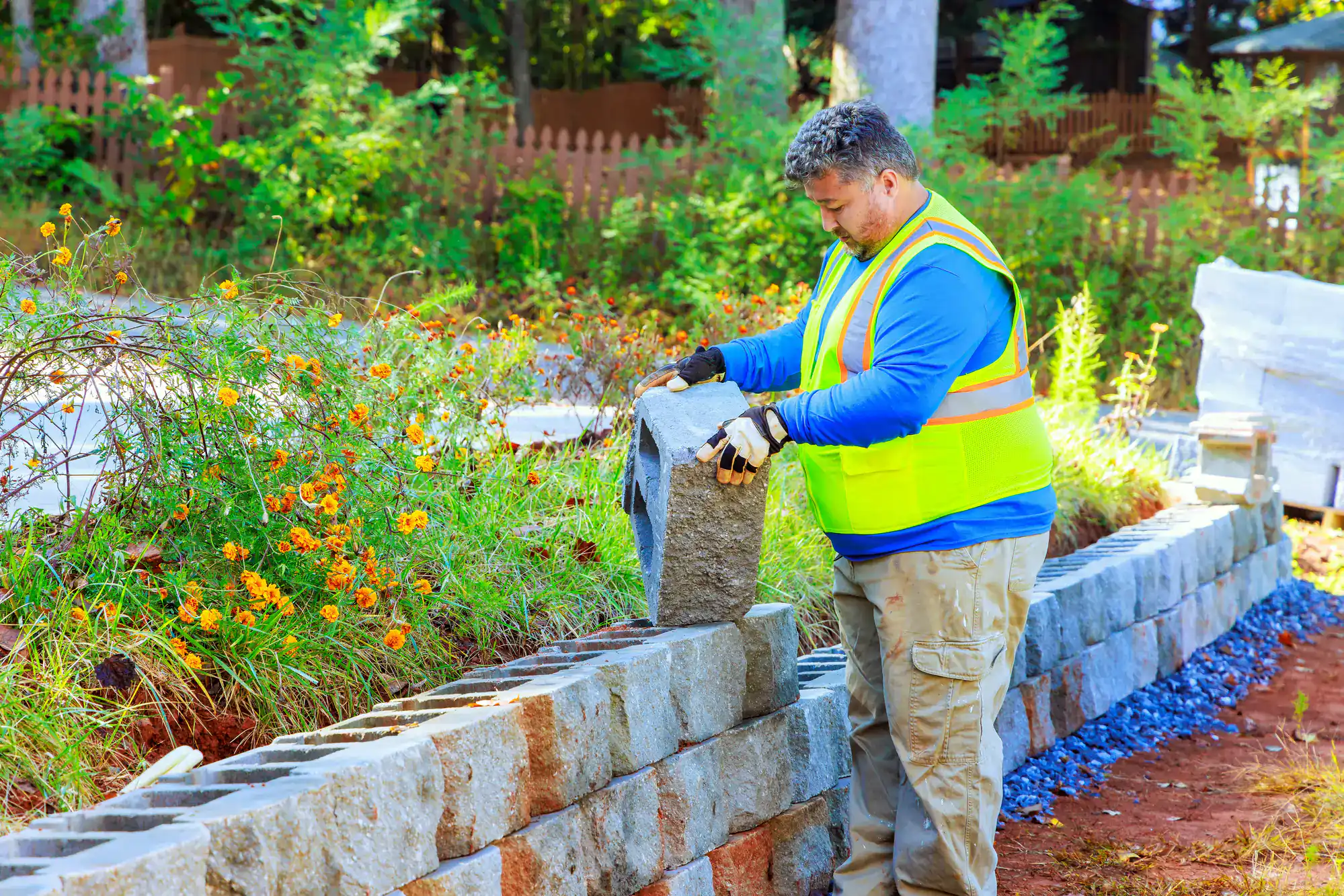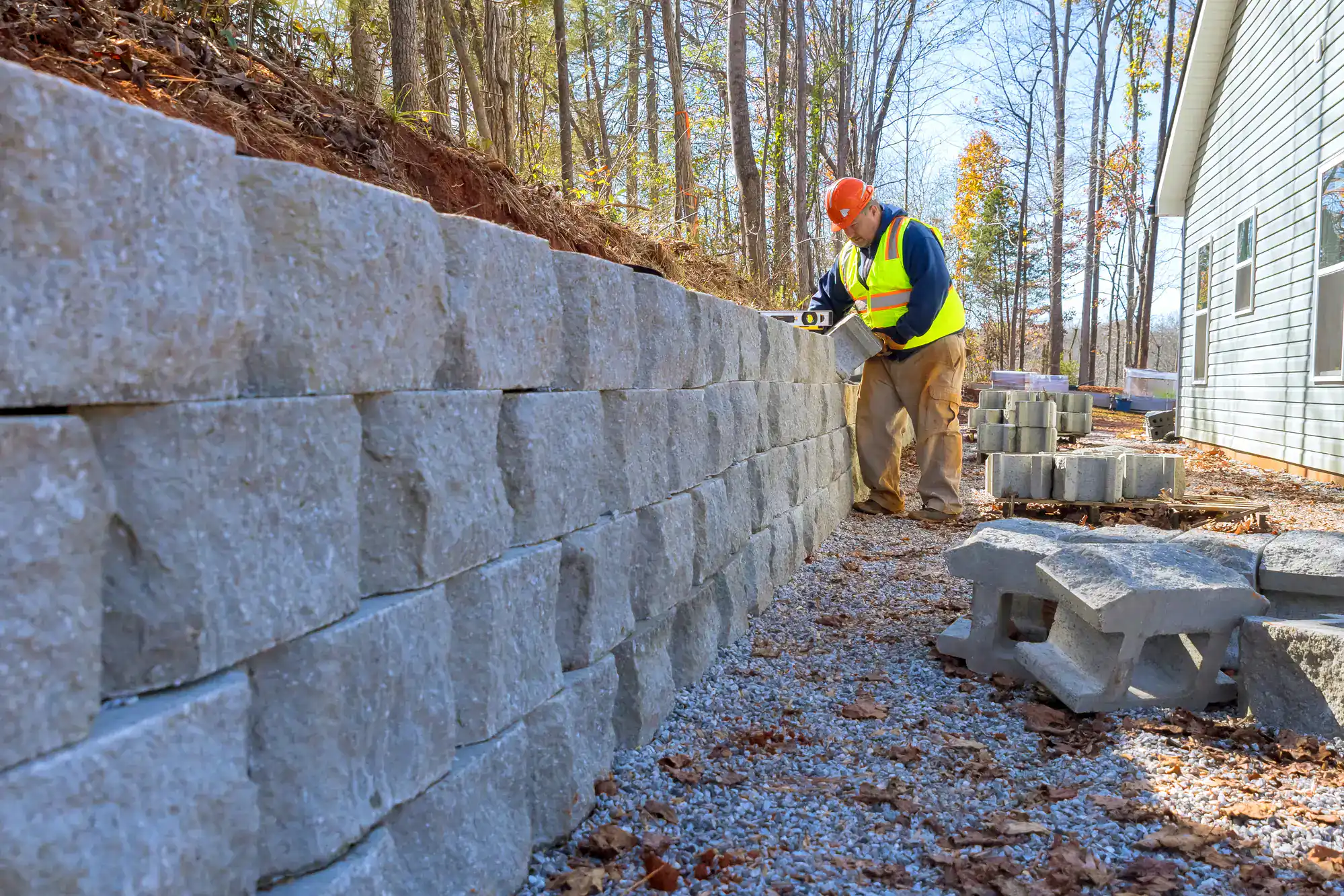

Your property’s slope doesn’t have to be a liability. When soil starts washing away after every storm, when your yard floods because water has nowhere to go, when you’re losing usable space to an unusable hill—that’s when you need a retaining wall that works.
A properly built retaining wall transforms problem areas into functional space. You get level ground for gardens, patios, or play areas. You get protection from Florida’s heavy rains and hurricane-force winds. Most importantly, you get peace of mind knowing your investment is protected by construction that meets Florida’s demanding conditions.
The difference between a retaining wall that lasts and one that fails comes down to understanding local soil conditions, proper drainage design, and using materials built for our climate. That’s what separates professional installation from weekend projects that end up costing more in repairs.
Since 1995, we’ve been the family business Lake Panasoffkee residents call when they need outdoor projects done right the first time. We’re not just another contractor passing through—we’re your neighbors, invested in this community for the long haul.
What makes us different is our commitment to “beyond meticulous” quality and our partnerships with the industry’s best manufacturers. As authorized contractors for Tremron, Belgard, and Flagstone, we have access to premium materials and factory-backed warranties you won’t find with every contractor.
We understand Lake Panasoffkee’s unique challenges, from the area’s groundwater conditions to the soil composition that affects drainage. When you work with a local family business that’s been serving Citrus County for three decades, you get expertise you can’t buy from out-of-town contractors.

Every successful retaining wall starts with understanding what’s happening below ground. Our team begins with a thorough site evaluation, examining soil conditions, drainage patterns, and the specific challenges your property faces. This isn’t a quick walkthrough—it’s a detailed assessment that determines the right solution for your situation.
Next comes the engineering phase, where we design a wall system that handles both the immediate slope issues and long-term drainage requirements. In Lake Panasoffkee’s soil conditions, proper drainage isn’t optional—it’s critical for preventing wall failure. We integrate drainage solutions from the foundation up, not as an afterthought.
Installation follows proven methods developed over 30 years of local experience. We excavate to proper depths, install engineered base materials, and build each course with precision. The final step includes backfill with appropriate drainage materials and final grading that directs water away from your property. You get a wall that’s built to last decades, not just years.

Ready to get started?
Not all retaining wall materials are created equal, especially in Florida’s challenging environment. We use segmental retaining wall blocks from industry leaders like Tremron and Belgard—materials specifically engineered for our climate and soil conditions.
These interlocking block systems offer advantages you won’t find in poured concrete or natural stone walls. They flex with soil movement instead of cracking, they allow for proper drainage integration, and they’re designed to withstand hurricane-force winds. Plus, they come in colors and textures that complement Lake Panasoffkee’s natural landscape.
Our installation includes proper base preparation, drainage integration, and geogrid reinforcement when needed for taller walls. Each project receives materials calculated for your specific load requirements, not generic solutions that might work elsewhere but fail in Florida’s unique conditions. You get a wall system backed by manufacturer warranties and installed by authorized contractors who know how to use these materials correctly.

Retaining wall costs in Lake Panasoffkee typically range from $25-45 per square foot for segmental block walls, depending on height, site conditions, and material selection. Simple residential walls under 4 feet might start around $25 per square foot, while taller walls requiring engineering and geogrid reinforcement can reach $45+ per square foot.
The total project cost depends heavily on site preparation requirements. Properties with challenging drainage, steep slopes, or poor soil conditions require additional excavation and drainage solutions that affect pricing. Lake Panasoffkee’s soil composition often requires specific base preparations that aren’t needed in other areas.
Most homeowners invest between $3,000-8,000 for typical residential retaining walls, though larger projects can exceed $15,000. The key is getting an accurate site assessment upfront so you understand exactly what your property requires for a long-lasting solution.
Segmental retaining wall blocks perform best in Lake Panasoffkee’s soil and groundwater conditions. Unlike poured concrete walls that can crack with soil movement, interlocking block systems flex and adapt while maintaining structural integrity. This flexibility is crucial given the area’s groundwater fluctuations and soil composition.
The key to success in local conditions is proper drainage integration. Lake Panasoffkee’s substantial groundwater input from the Floridan aquifer creates unique drainage challenges that require engineered solutions. Segmental blocks allow for integrated drainage systems that channel water away from the wall structure, preventing the hydrostatic pressure that causes wall failures.
Materials from manufacturers like Tremron and Belgard are specifically designed for Florida’s climate, including resistance to freeze-thaw cycles, salt air, and hurricane-force winds. These blocks also offer design flexibility, allowing for curves, steps, and corners that work with your property’s natural contours rather than fighting them.
Most residential retaining wall projects in Lake Panasoffkee take 3-7 days from excavation to completion, depending on wall height, length, and site complexity. Simple walls under 100 linear feet and 4 feet high typically complete in 3-4 days, while larger or more complex installations can take a full week or more.
The timeline includes site preparation, excavation, base installation, block placement, backfilling, and final grading. Lake Panasoffkee’s soil conditions sometimes require additional time for proper base preparation, especially in areas with poor drainage or unstable soil. Weather delays are also common during Florida’s rainy season.
Preparation work happens before installation begins, including permits, material delivery, and utility marking. The actual construction timeline starts once excavation begins and continues without interruption to ensure proper curing and settling. Rush jobs often lead to shortcuts that cause problems later, so proper scheduling is essential for quality results.
Permit requirements for retaining walls in Lake Panasoffkee depend on wall height and location. Sumter County typically requires permits for retaining walls over 4 feet in height, walls near property lines, or walls that affect drainage patterns. Walls supporting driveways or other structures may also require permits regardless of height.
The permit process involves submitting engineered plans that show proper drainage, structural calculations, and compliance with local building codes. This isn’t just bureaucratic paperwork—permits ensure your wall meets safety standards and won’t create drainage problems for neighboring properties.
We handle the permit process as part of our service, including engineering calculations, plan submission, and inspection scheduling. Attempting to skip permits on walls that require them can result in costly removal and reconstruction orders from the county. It’s always better to check requirements upfront than deal with compliance issues later.
Retaining wall failure prevention starts with proper drainage design and installation. In Lake Panasoffkee’s conditions, walls fail when water builds up behind them, creating hydrostatic pressure that pushes the wall over. Professional installation includes drainage pipes, gravel backfill, and grading that directs water away from the wall structure.
Regular maintenance includes keeping drainage outlets clear, monitoring for signs of settlement or movement, and addressing minor issues before they become major problems. Look for cracks, bulging, or leaning that indicates structural stress. Early intervention can often prevent complete wall failure.
The most important prevention step is hiring qualified contractors who understand local soil conditions and drainage requirements. Walls built without proper engineering, drainage integration, or quality materials will eventually fail in Florida’s challenging environment. Investing in professional installation and quality materials prevents the much higher costs of wall replacement and property damage.
Retaining walls and seawalls serve different purposes, though both control soil movement. Retaining walls hold back soil on sloped properties, creating level areas and preventing erosion from rain and surface water. Seawalls protect shorelines from wave action and water erosion along lakes, rivers, or coastal areas.
In Lake Panasoffkee, you might need both types of structures depending on your property’s location. Properties near the lake may require seawalls to prevent shoreline erosion, while sloped areas away from water need retaining walls for soil control. The construction methods and materials differ significantly between the two applications.
Retaining walls use segmental blocks, poured concrete, or natural stone with integrated drainage systems. Seawalls typically use vinyl sheet piling, concrete, or composite materials designed to withstand constant water contact and wave action. The engineering requirements are different, and contractors often specialize in one type or the other rather than both.
Useful Links